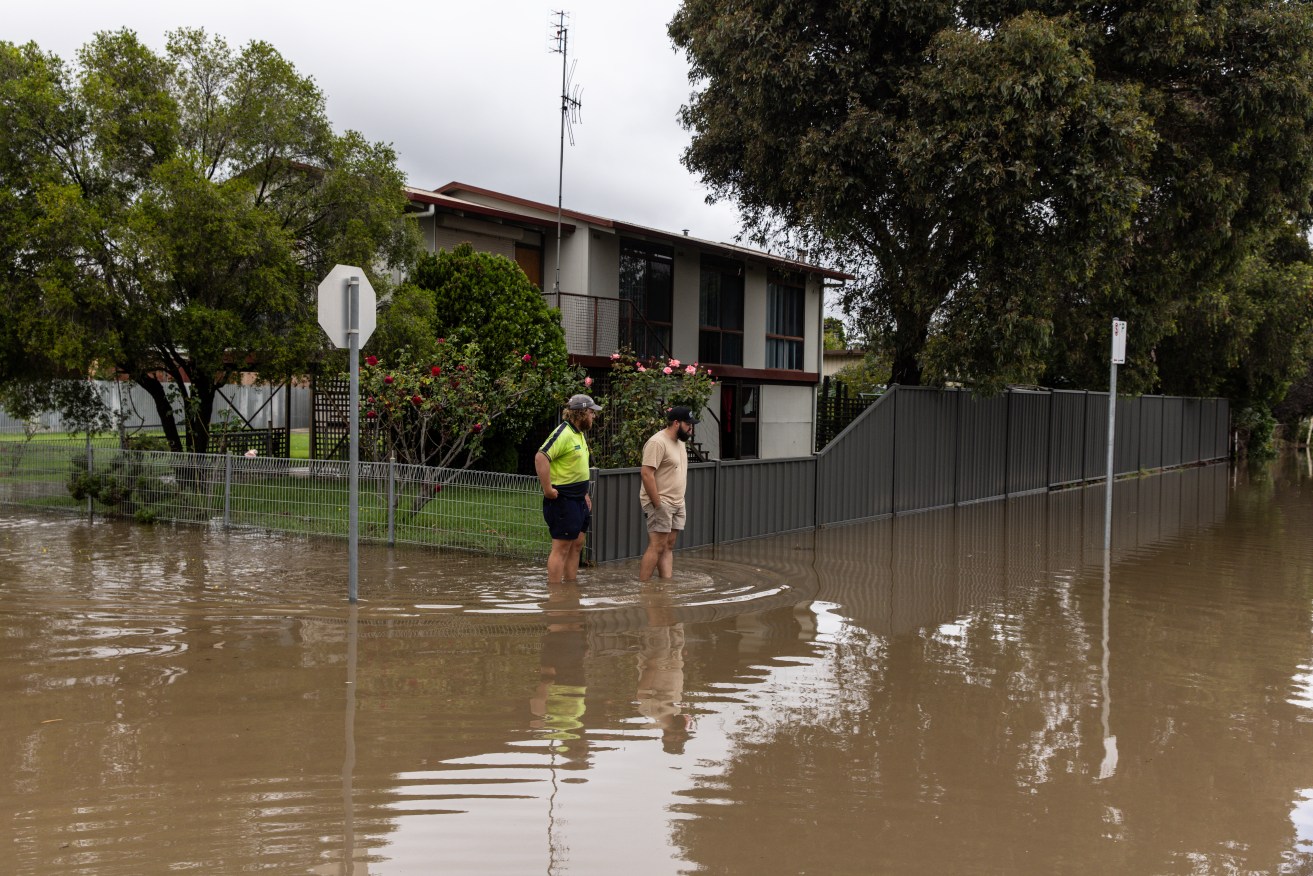Shunned by insurance, flood victims forced to rely on savings, charity
Households recovering from floods are dipping into their savings or relying on government and charity funding as insurance costs go through the roof.

Floodwater is seen in the centre of Seymour on Monday, January 08, 2024. Thunderstorms and heavy rain have hit parts of Victoria, South Australia and NSW with residents making hundreds of calls for help amid flooding. (AAP Image/Diego Fedele) NO ARCHIVING
Global re-insurance giant Swiss Re blamed the growing crisis on a lack of risk reduction and planning laws that allow building on flood-prone land.
The company’s concerns were outlined in a submission to a parliamentary inquiry into the insurance industry’s response to major flood disasters.
Appearing at a public hearing on Friday, Swiss Re executive Trent Thomson suggested improving building standards and land use.
“Having controls in place around those two areas sets us up for a more resilient Australia in the longer term,” he said.
Mr Thomson said insured households could be back on their feet within six to 12 months, which drew a reaction from Labor MP Susan Templeman.
The committee chair – who lives in the Blue Mountains, west of Sydney – said six months was “a bit of a fantasy” even with full insurance.
“Anyone in my community listening will probably be stroppy with me if I don’t say that,” she said.
“I’d hate for you to think that it was ‘great, quick fix turn around and get it all done’ when it is a much more traumatic journey.”
The National Emergency Management Agency has also lodged a submission with the inquiry.
Climate change was a major factor behind increasingly frequent natural disasters that were driving up insurance costs, the agency said.
“The sheer number and extent of flood events in 2022 illustrates … without insurance, people face longer recovery times and need to rely on their own savings or funding from governments or charities,” it said.
Global reinsurance costs, construction and supply chain issues, and worsening international security were likely to be permanent features of the insurance market for the foreseeable future, the agency said.
The cost of home and contents insurance has become unaffordable for one in eight households, Swiss Re told the committee.
That’s up from one in 10 households in 2022.
“Risk reduction is the only way to lower the risk and therefore improve affordability,” the insurer said.
The risk of large losses needed to be reduced for reinsurance to remain sustainable, Swiss Re said.












